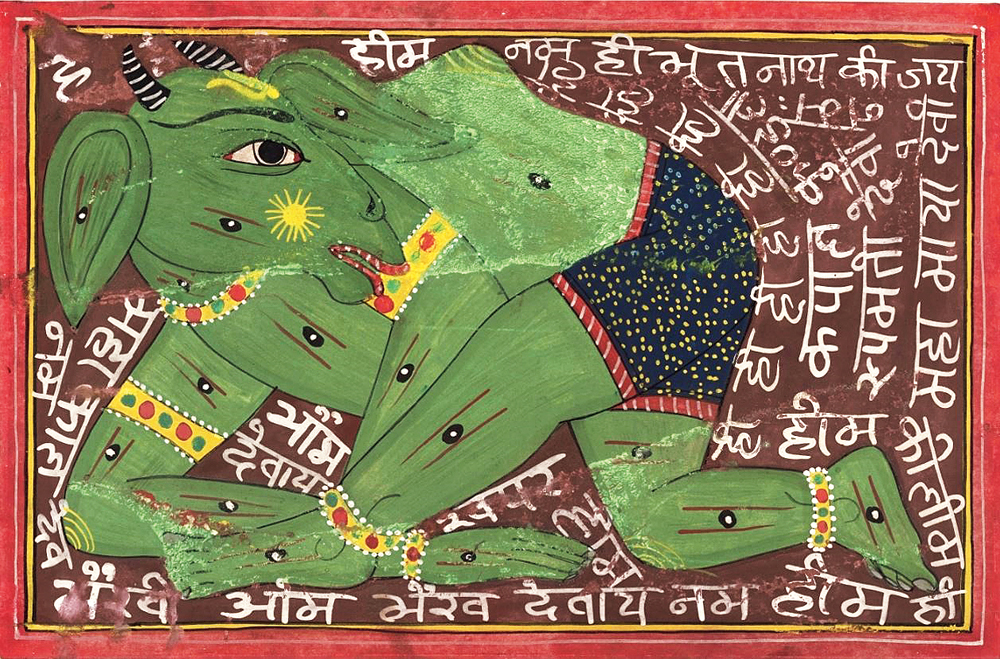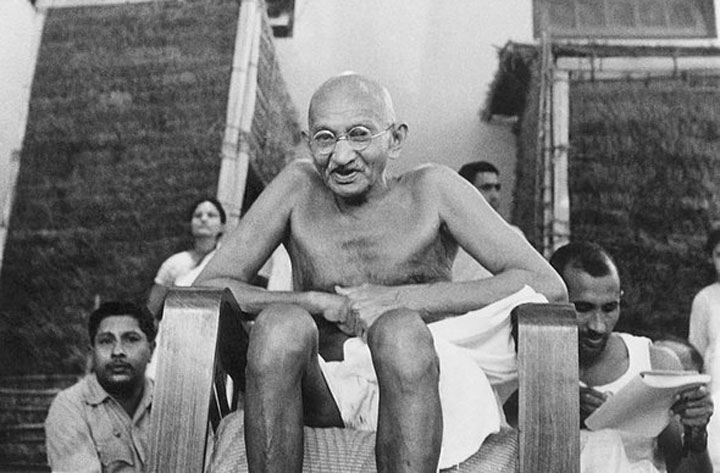Once, a passer-by found Mullah Nasruddin searching for his key under a light. The passer-by joined him to help in this search. When the search proved to be in vain, the passer-by asked him where he had lost it. Nasruddin replied that he had lost it somewhere else. When asked why then he was searching in this place, he replied, “Because there is light here.”
The scene in Indian academic humanities and social sciences is similar to that of Nasruddin searching under the light. What if he continues to search even after this? Is it possible to search for the key where he lost it, given the fact that there is no light there? An attempt is made here to move some part of the light to the place where the key is lost, thus turning the gaze from the outside to those texts that are before us, and that, too, from the modern period.
There is an apparent inconsistency in Mahatma Gandhi’s commitment to the doctrine of non-violence and his clinging to the Bhagavad Gita. In the Gita, Krishna persuades the disinclined Arjuna to fight the war. This persuasion makes the text endorse violence. This palpable inconsistency creates an uneasiness in understanding Gandhi.
It is against this formidable background that Gandhi embarks on a unique hermeneutical adventure to claim, with concrete textual evidence, that the Gita decries violence, it does not endorse it. This move has tremendous academic importance while being an incredible political strategy. He firmly clings to the ideals of non-violence. However, he proposes a U-turn by rejecting all the earlier interpretations of the Gita that perceived war as central to this text. In contrast, he turns the attention away from the site of the battle to establish that the Gita advocates not violence but in fact, non-violence.
Gandhi’s move from text to interpretation saves him from the predicament of having to abandon the Gita for the sake of non-violence. Thus, the Gita stays with Gandhi but in the form of a radically new understanding. He embarks on this Mimamsa exercise by bringing two critical variables into the discussion: one is internal to the book and the other external to it. The internal one is the trigunas typology in the Gita, namely, satva, rajas and tamas. The three gunas are internally related to one another in a hierarchical order where satva is at the top, tamas is at the bottom and rajas in between these two. If satva is the privileged guna and war belongs either to rajas or tamas, the Gita cannot be advocating satva, which is a state of non-violence, on the one hand and war and violence on the other side. Gandhi solves this problem by retaining the first claim that Gita privileges satva while rejecting the second claim that it endorses violence.
Having made this more substantial claim, Gandhi consolidates his interpretation that the Gita does not endorse violence. On the contrary, it advocates the practice of satva, which is closer to non-violence. He tries framing a response to Krishna’s advice to Arjuna to fight the war and not abstain from it. This advice is perhaps the most contentious issue influencing those who interpret the text as advocating violence. Krishna asked Arjuna to fight in the war to move him from the tamasic to the rajasic state. Arjuna’s reluctance to fight is not because of his satvic nature, since he has fought often enough in the past, but because of his attachment to his kin.
Here let us note that Gandhi distinguishes inaction from non-violent action. Gandhi prefers violence or rajas if the choice is between rajas and tamas. However, he is clear and consistent in advocating the doctrine of non-violence. Given this standpoint, Gandhi sees in Krishna an attempt to save Arjuna from relapsing into tamas or inaction. It was this, he says, that made Krishna ask Arjuna to take to violence. To circumvent regression, Krishna persuades Arjuna to at least maintain the status quo.
While this contextual necessity made Krishna advise Arjuna, this, however, says Gandhi, cannot be universalized and cannot be taken as Krishna endorsing violence. Making this clarification, Gandhi says: “But to conclude from this that the Gita teaches violence or justifies war is as unwarranted as to argue that, since violence in some form or other is inescapable for maintaining the body in existence, dharma lies only in violence.” On the contrary, clarifies Gandhi, “The man of discriminating intellect… teaches the duty of striving for deliverance from this body which exists through violence, the duty, that is, of striving for moksha.”
Subsequently, he turns to an external variable that falls outside the text, namely, the context of narrating the epic, the Mahabharata, that contains the Gita as a part. He discovers a decisive distinction between the contents of the epic and the context of narrating it. This crucial and staple distinction eluded a long list of readers. Driven by the deep desire for the Indian freedom movement that has to move on the road of non-violence, he identifies, highlights and makes maximum academic use of it.
Referring to the context of narrating the epic, Mahabharata, Gandhi says, “Vyasa wrote his supremely beautiful epic to depict the futility of war.” Gandhi reminds us that the context of the narration of the epic by the sage, Vaishampayana, is the attempt to dissuade the successor of Arjuna, Janamejaya, from threatening to kill all serpents. Janamejaya wanted to wipe out all snakes to avenge his father, Parikshit, who died of a snake bite. Gandhi can turn down all readings of these texts by using the opposition between the contents of the book and the intention of narrating it. This move is an unprecedented Mimamsa exercise.
Earlier in his work too, he had held the view that “physical battle is only an occasion for describing the battle-field of the human body. In this view, the names mentioned are not of persons but of the qualities which they represent”. If we consider this, then, says Gandhi, we will realize that “[t]he Mahabharata was not composed with the aim of describing a battle”. Instead, the “author has cleverly made use of the event to teach great truths”. Given the tricky nature of the plot and the literary style, if the reader is not on “his guard, he may be misled”.
In support of this adventurous interpretation, using arguments from both within and outside the text, he says that the subject of the Gita is neither a “description of the battle” nor a “justification of violence”. Gandhi makes yet another radical move when he says that the characters in the Gita cannot be taken as “historical persons”. Having made this crucial distinction, Gandhi claims that the “overall teaching of the Gita is not violence, but non-violence.” This endorsement of non-violence, according to him, “is evident from the argument which begins in Chapter II and ends in Chapter XVIII. The intervening chapters propound the same theme.”
Academic philosophy in India can learn a lot from such non-philosopher political thinkers. It can shed more light and contribute to making better sense of India.
The author is on deputation to the Indian Institute of Technology, Tirupati. He teaches philosophy.













